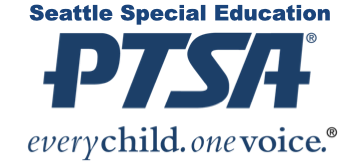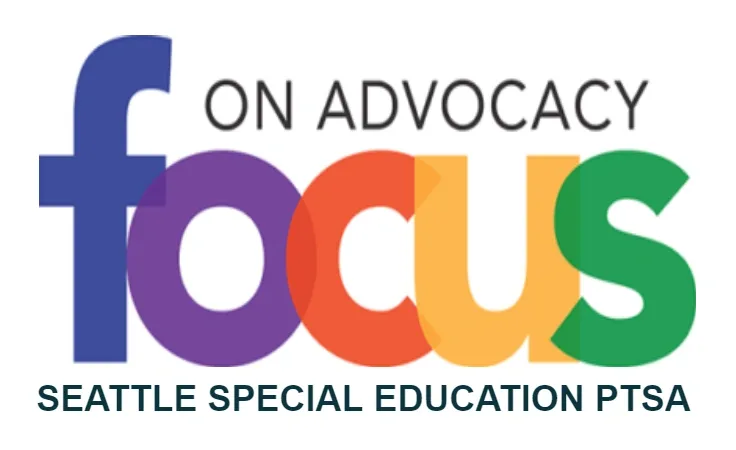Letter sent on Tuesday afternoon to the Seattle School Board, Superintendent Jones and executive managers, and Seattle Education Association
On Friday 8/21, Seattle Public Schools (SPS or The District) publicly shared multiple proposals made to the Seattle Education Association (SEA) earlier this month. On Thursday 8/25, SEA publicly shared its counter-proposals. This letter is our assessment of the proposals regarding special education services and their delivery and their probable impact on our students.
A caveat—this letter does not factor in the recommendations of the administrative, teaching staff, and community members of the Special Education Task Force. Barring clear permission to release the task force recommendations, teaching and community members have kept the material confidential. The district’s action in publishing the proposals, even including a version that shows the edits made, is a major move towards transparency in communications. We applaud that move. If this response includes assumptions and questions the task force recommendations could correct or answer, whoever can provide that information, please do.
In addition to recognizing SPS for their transparency in communications, let’s recognize that all of us, those at the bargaining table and those affected by the bargaining results, are working to support the standard set by the Individuals with Disabilities Education Act (IDEA) and Section 504 of the Rehabilitation Act of 1973 protecting rights of students with disabilities to equitable access to education. That goal is a free and appropriate education (FAPE) in the least restrictive environment (LRE), as mandated by the IDEA. Acknowledging that shared goal, our feedback is informed by long-standing, ongoing issues within Seattle schools and in this state, that harm or set barriers to the education of students with disabilities.
- Is there a shared definition for inclusion? While Washington ranked 44th out of 50 states on inclusion as of 2018, the projects through the Office of Superintendent of Public Instruction (OSPI) are bringing improvements to some schools.
- Have SPS and SEA considered asking for technical support to define and implement inclusionary practices in our schools from OSPI, via the University of Washington Haring Center and/or the TIES Center? OSPI is contracted with both organizations to provide technical assistance about transitioning to inclusive practices to schools and school districts in Washington state.
- The SPS plan for inclusion, for some students, is through Collaborative Teaching, which SEA re-named the Merger pathway. This approach also addresses a known issue of special education staffing by eliminating the ratios of teachers and support staff to students. As outlined, the plan would only affect students in the following service models: Access, Resource, and Social Emotional Learning (definitions).
- Collaborative Teaching is not defined in the proposal. A search of various education sites defines collaborative teaching, collaborative team teaching or co-teaching as a system where a general education and a special education teacher work together. Will SPS please share their definition of Collaborative Teaching? Is it the equivalent of co-teaching?
- In lieu of student to educator ratios, staffing would be determined based on student needs as outlined in their Individualized Education Programs (IEPS). We applaud the district for proposing an approach that honors individualized support for different students. Though SEA’s response calls for the development of a calculator, the SPS proposal doesn’t detail how to determine those numbers.
- Do the references to staffing represent co-teaching teacher to student ratios? Or would staffing numbers be based on needs mean general education teachers would be supported by paraprofessionals and no classroom-based special education teachers would be providing services in the classroom?
- Would the District consider reviving the Special Education Task Force, or a similar setup, that collaborates with SEA and includes community voice based on data, to jointly reach a method for setting staffing based on student needs?
- One of our biggest concerns is what’s not mentioned in the plan. What does SPS see for inclusion for students with disabilities not covered by the Collaborative Teaching model—the students in the Focus, Distinct, and Unique service models/pathways (definitions)?
- Without a reference to a bigger picture of inclusion for all students, this proposal does not achieve what it needs to achieve. It also is out of compliance with School Board Policy 0010, passed by the School Board in June 2022. That policy calls for the inclusion of all students with disabilities in general education classes to the maximum extent possible. Indeed, students in the Focus and Distinct pathways, for example, are generally the least included when it comes to education along with their non-disabled peers. We know the scope of work needed for planning and implementation of inclusion done correctly is significant. To support all students successfully means support for and by building and District staff as well as for and by families and communities. Gaining that support starts with transparently addressing the need for support.
- We have questions why the two plans take such different perspectives on the Special Education Task Force. While the task force was part of the 2018-2022 collective bargaining agreement, it was not implemented until October 2021.
- What approach would SPS take to include community voice in finalizing and implementing a plan that moves Seattle schools to become a more inclusive educational system.
We again want to thank SPS and SEA for making the process more transparent and sharing their proposals with the public. We know there is a continued commitment to providing all students an appropriate education in the least restrictive environment. System change is difficult and it is needed.

